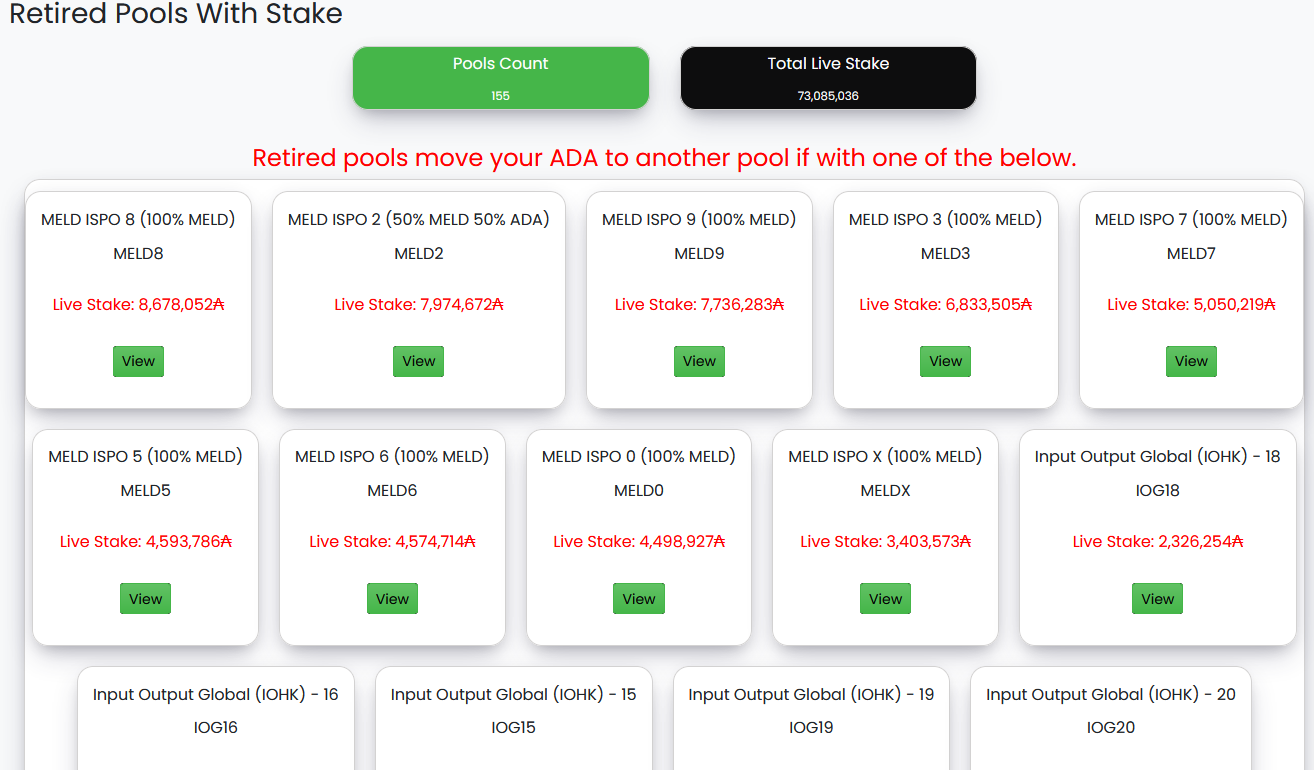According to the data from PoolPeek, a Cardano stake pool explorer, approximately 73 million ADA currently sits in retired pools earning zero rewards. Based on the explorer’s Pools Count, 155 pools currently have retired status.
When a promising pool emerges, does its best, and then retires, there is no impact on users’ held assets, but their staking earnings are impacted a little.
Read Also: Charles Hoskinson: We Aim To Make Cardano As Ubiquitous As Internet and Be Used By Billions
So it’s advisable for users to identify the already retired pools and move their ADA to another pool where they can earn rewards.
Follow this link to see all the 155 retired stake pools in order to know where to move your staked ADA.

How to Retire a Stake Pool
If there is a reason for you to deregister (retire) your stake pool, this task is very similar to reregistering it. Below are the steps for you to take:
- Determine the epoch in which you want to retire the pool.
- Generate a deregistration certificate
- Create a transaction containing the deregistration certificate
- Once the blockchain reaches the selected epoch, the pool will be retired and your deposit will go back to the pool rewards account
- Do not deregister the pool stake key or the deposit will have no place to go and will be sent to the treasury after retirement.
Read Also: Cardano Rolls out New Peer-to-Peer (p2p) Testnet to Enhance Network Decentralization
De-registration must take place between the current epoch+1 and eMax, which is a protocol parameter determined in the genesis.json file.
Read the detailed process here or here.


